

William Stopford
The cars axed in 2025 that we'll miss the most
14 Hours Ago
Nissan is taking a different approach to Toyota on hybrid tech, and while it pays dividends on the road it can't match its rival's efficiency.
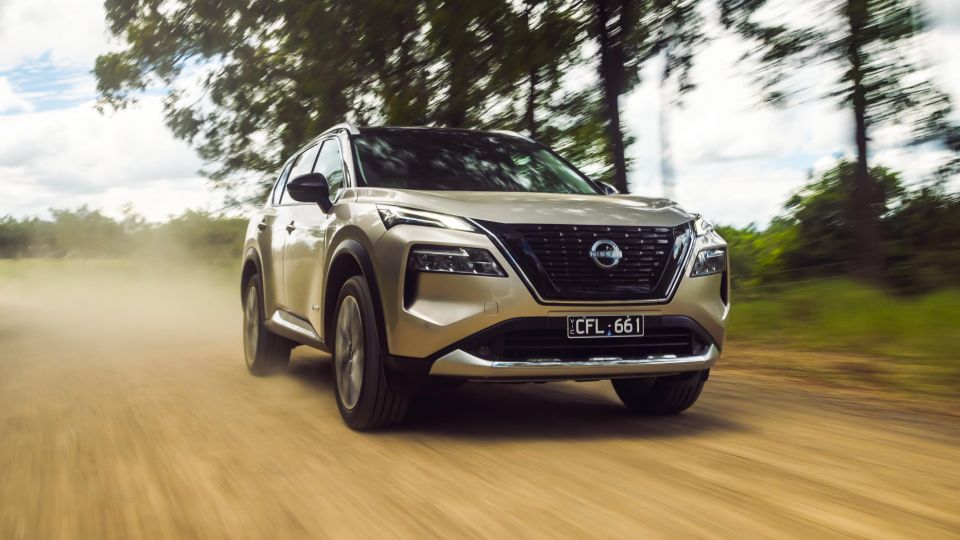
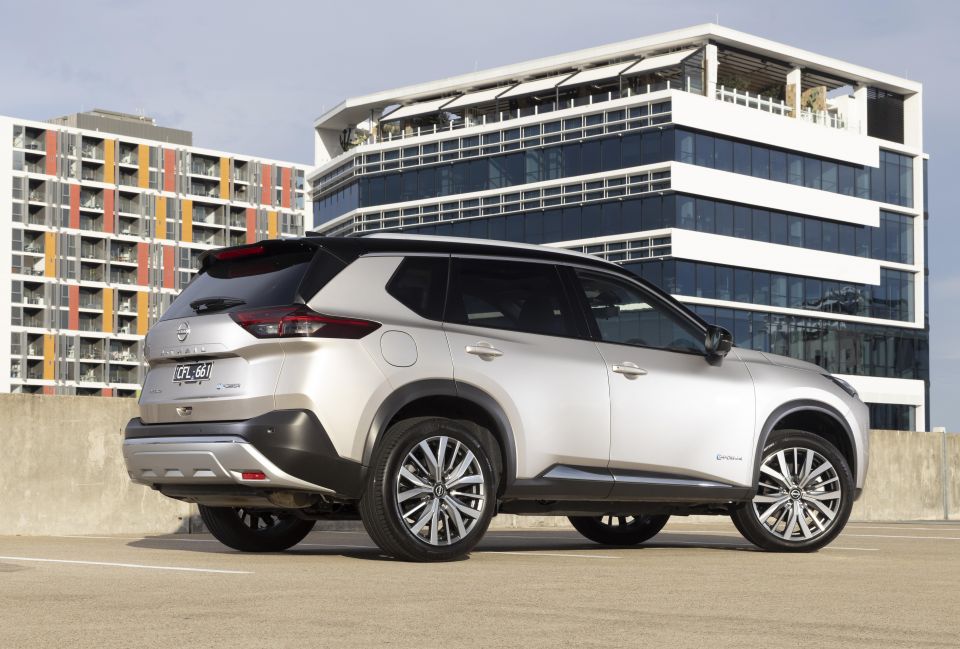

Quickly see how this car stacks up against its competition. Select any benchmark to see more details.
Where expert car reviews meet expert car buying – CarExpert gives you trusted advice, personalised service and real savings on your next new car.
While the Toyota RAV4 Hybrid remains one of the most in-demand new vehicles in the country, you’d be surprised how few of its direct competitors offer hybrid powertrain options in Australia.

The second-best seller, the Mazda CX-5, offers no electrification at any level – no mild-hybrid, no series or parallel hybrid, no plug-in hybrid – and nor do the fourth- and fifth-best sellers in the Kia Sportage and Hyundai Tucson. Kia plans to finally introduce the Sportage Hybrid early in 2024.
Elsewhere, the third-best selling Mitsubishi Outlander offers a plug-in hybrid, though it’s expensive and requires regular charging to get the most out of it, while the Subaru Forester Hybrid lacks the refinement and efficiency of its Toyota rival.
Finally, another of the big players is entering the ring. Meet the 2023 Nissan X-Trail e-Power with e-4orce (breathes), the Japanese brand’s answer to the top-selling RAV4.
Nissan takes a different approach to Toyota. The e-Power setup aims to offer a more EV-like driving experience, in a bid to boost performance and driver satisfaction, as well as refinement on the move.
How does it hope to achieve that? The petrol engine in this series hybrid (not parallel), never directly drives the wheels. Instead, it’s constantly acting as a generator, recharging the battery through an inverter.
On paper it’s not quite as efficient as its Toyota rival, but could be more fun to drive.
Australia’s first electrified X-Trail (the previous model had a hybrid overseas, but it never came here) arrives as a premium option in the mid-size SUV segment, approaching $60,000 drive-away for the most affordable grade.
At launch, the X-Trail e-Power with e-4orce will be offered in high-spec Ti and Ti-L trims only, with starting prices of $54,190 and $57,190 before on-road costs respectively.
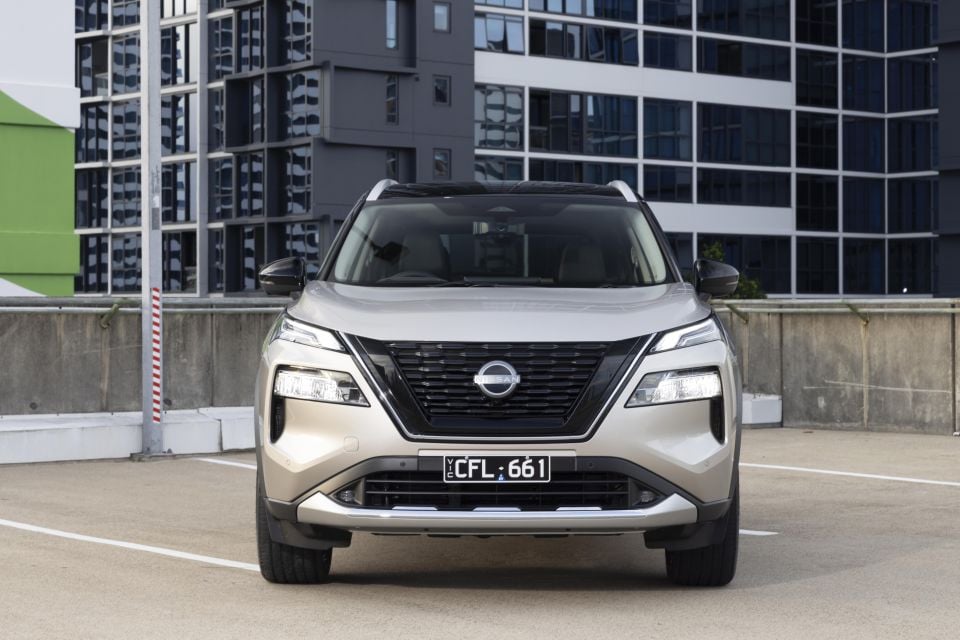
Compared to the equivalent 2.5-litre petrol X-Trail Ti and Ti-L, the e-Power drivetrain commands a $4200 premium. Toyota typically offers a 2WD Hybrid for around $2500 over a 2WD petrol, and a RAV4 AWD Hybrid commands a $5500 premium on most grades, though the Edge AWD Hybrid is $2130 dearer than the AWD petrol.
For reference, the Toyota RAV4 Cruiser AWD Hybrid lists for $51,200 before on-roads, while the adventure-ready Edge AWD Hybrid is $55,150. Keep in mind, you may be waiting over two years (!!) if you order today.
Nissan’s decision to bring in high-spec grades at launch also positions the X-Trail e-Power quite closely to a relative, in the Mitsubishi Outlander Plug-in Hybrid EV (PHEV).
The Mitsubishi PHEV, which shares the same bones as the X-Trail, starts from $55,490 after a recent price adjustment. The Outlander PHEV offers up to 84km (NEDC) of EV driving on a full charge, and a miserly fuel claim of just 1.5L per 100km – compared to the X-Trail e-Power’s 6.1L/100km.
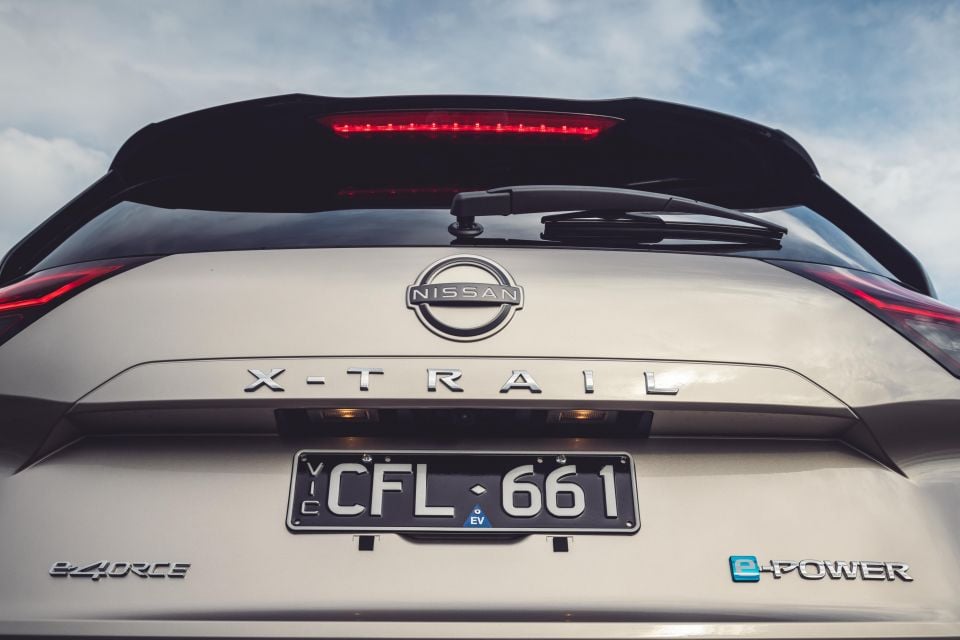
2023 Nissan X-Trail pricing:
Prices exclude on-road costs
Buy your new car without the stress. It's fast, simple and completely free.

Great service from Travis and team, second time I have used this business would not hesitate to recommend them to anyone
Craig C.
Purchased a Ford Ranger in Sunshine Coast, QLD
CarExpert helped Craig save thousands on his Ford Ranger, now let us save you on your next new car.
Find a dealSave for the e-Pedal button on the centre tunnel and a power meter instead of a rev counter, the cabin is the same as any other high-spec X-Trail.
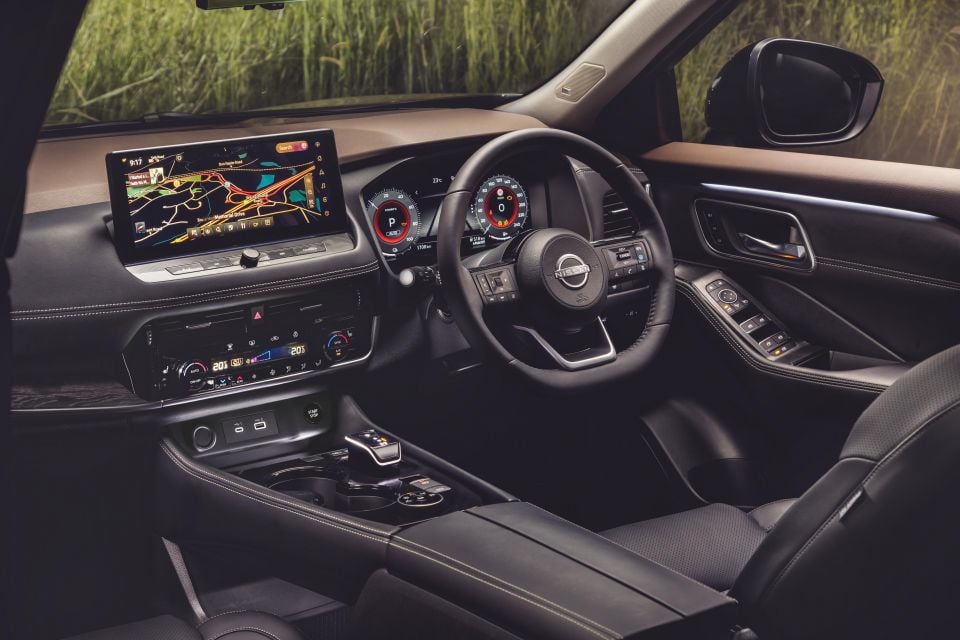
As with the petrol versions Ti and Ti-L grades get a very digitised cabin, incorporating dual 12.3-inch displays and a colour head-up display with 10.8 inches of real estate.
It’s a big improvement over the previous-generation X-Trail, but you’d know that already based on our previous coverage.
Seat comfort is great up front, with supportive driver and passenger chairs that benefit from electric adjustment and memory settings in the Ti-L, or just 10-way power adjustment with lumbar in the Ti.
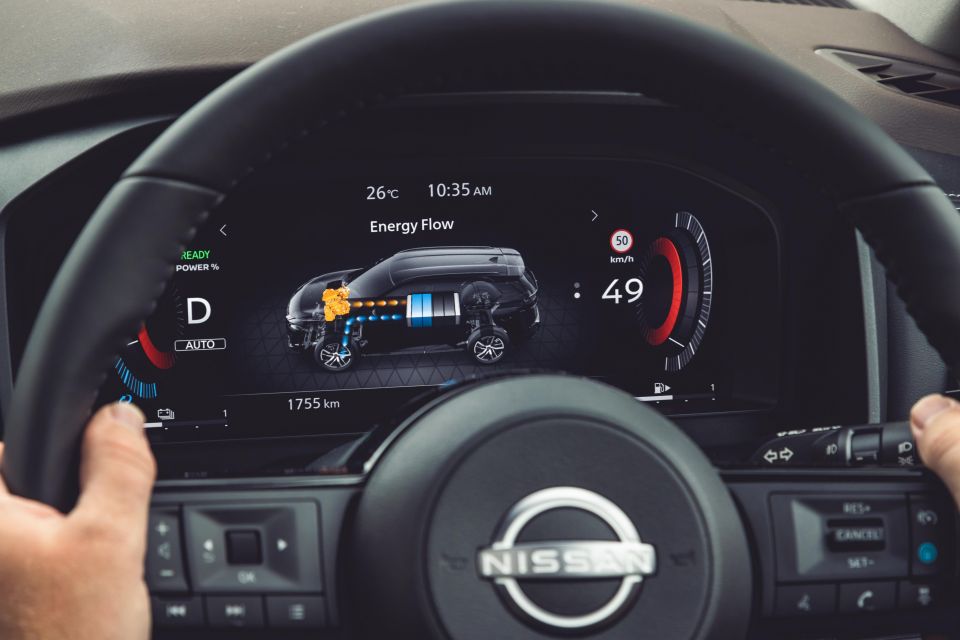

Leather is standard on the Ti but if you opt for the Ti-L you get lovely quilted Nappa trim, which is available in both Black as well as $NCO Tan – it’s really good to see something different available.
Nissan’s new 12.3-inch digital instrument cluster is an improvement over the dated binnacles of its old stuff, and while it’s attractive and offers a few menus and layouts – including a cool drivetrain display – it lacks the crispness of stuff from the VW Group, and will only display mapping when using turn-by-turn navigation.
It’s a similar story to the 12.3-inch central touchscreen, which presents nicely on first glance and offers a good suite of features, but lacks internet connectivity. Wireless Apple CarPlay is a great inclusion though, and it worked flawlessly during our time with the X-Trail.
The native interface occasionally lags, but it’s otherwise fine for the class and definitely is a substantial upgrade for someone coming out of a previous X-Trail or Qashqai.
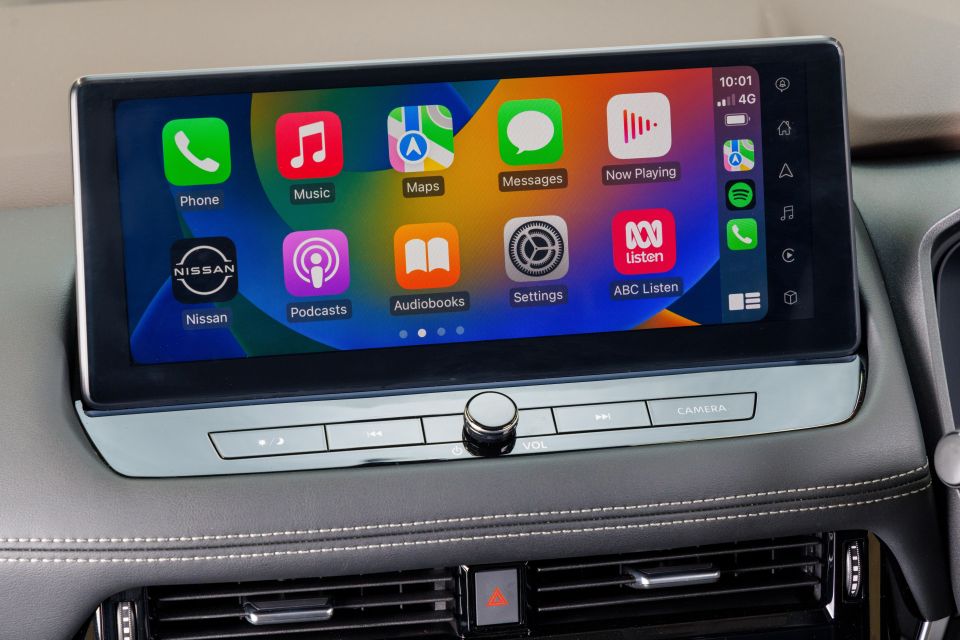
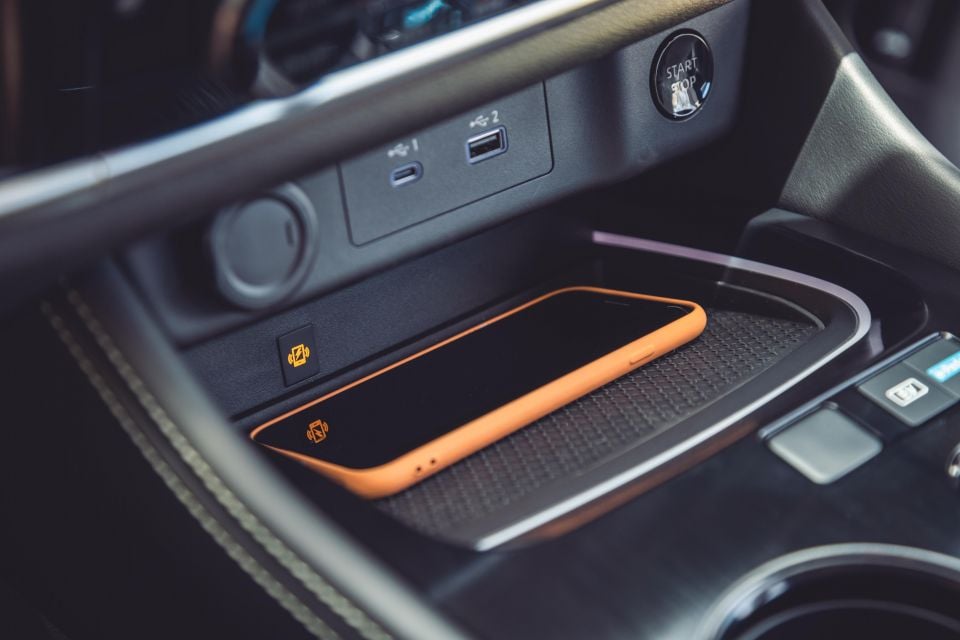
Storage and amenities are pretty good up front, with a deep rubberised wireless charging pad; USB-A, USB-C and 12V outlets; large toothed cupholders, and a deep centre console bin underneath a padded leatherette armrest.
The centre tunnel also has a floating design, with a rubberised section underneath to store larger items which is handy, and something fairly unique for the segment.
You’ve also got a shift-by-wire gear selector which looks swish and is user-friendly manner. You also have buttons for EV Mode and e-Pedal Mode, as well as a rotary dial to shuffle through drive and terrain modes.
It’s also good that Nissan has stuck with physical switchgear for the climate controls, which are all clearly labelled and within easy reach.
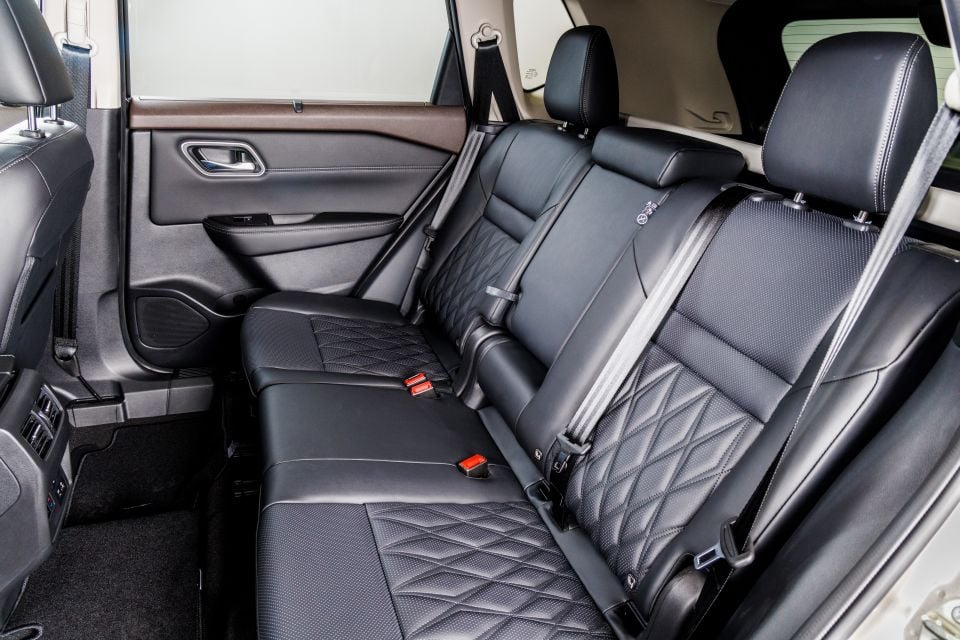

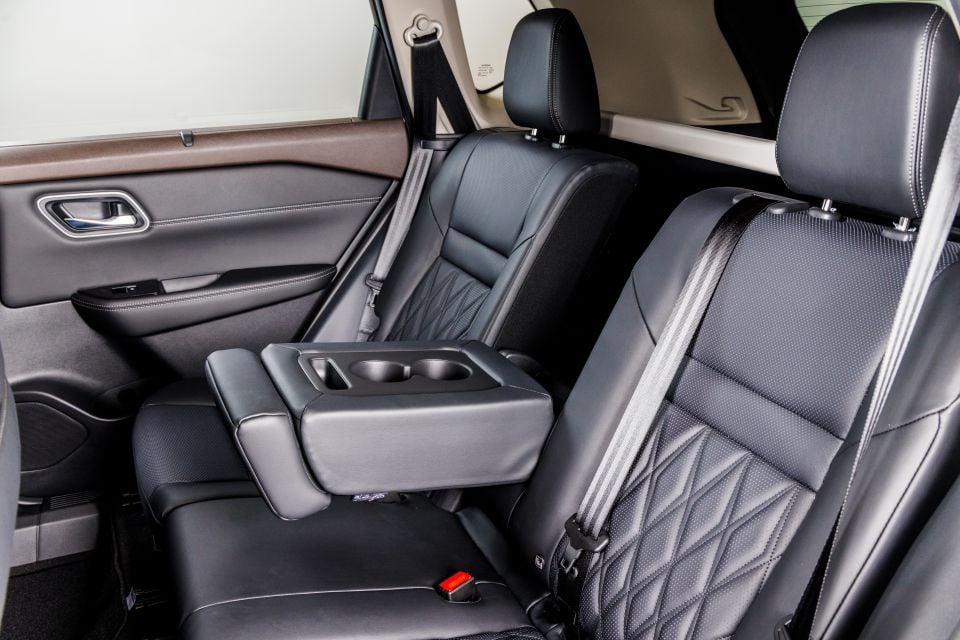
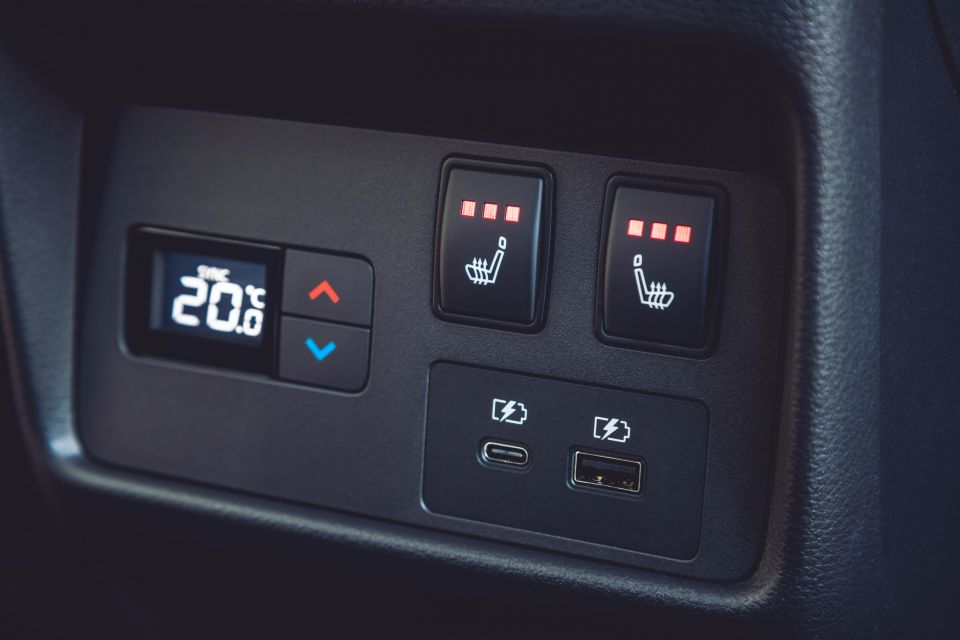
Arguably one of the X-Trail’s biggest selling points is rear passenger room and boot space, and the e-Power drivetrain barely affects the packaging.
There’s room for full-grown adults in the back, even behind taller drivers. I didn’t find the panoramic sunroof to be an issue for headroom either behind my own driving position, and I’m 6’1.
Rear air vents with a third zone of climate control are standard on all e-Power variants, along with additional USB-A and USB-C charge ports for keeping smartphones and tablets juiced.
If you opt for the Ti-L, you also get manual sunshades for the rear windows and heated outboard rear seats. The centre seat folds down to make a centre armrest with cupholders, and the requisite ISOFIX anchors and top-tether points are all fitted as standard.

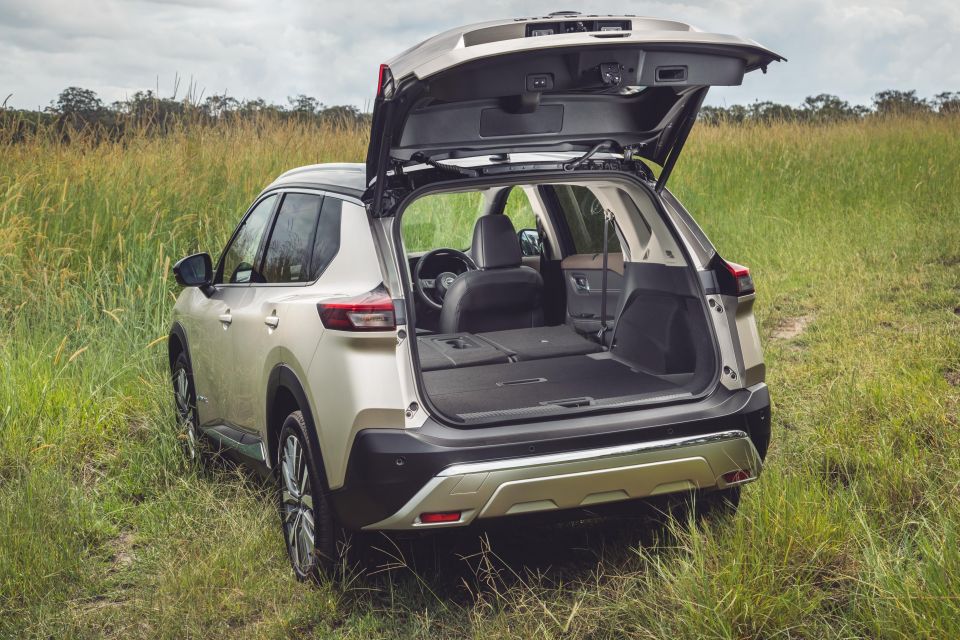
There’s no third row option on Australian models like there is overseas, but the X-Trail e-Power’s 575L boot (to the roof) is just 10L down on petrol-powered five-seat models.
Nissan doesn’t quote a boot volume with the second row folded, but we can attest it’s one of the more practical luggage areas in the segment, and thankfully the seats fold pretty flat as depicted above.
Unlike the petrol range, the X-Trail e-Power forgoes a space saver spare wheel and has a tyre repair kit. For reference, all RAV4 Hybrid models feature a temporary space saver spare.
If you’re not familiar with e-Power, let us break it down for you.
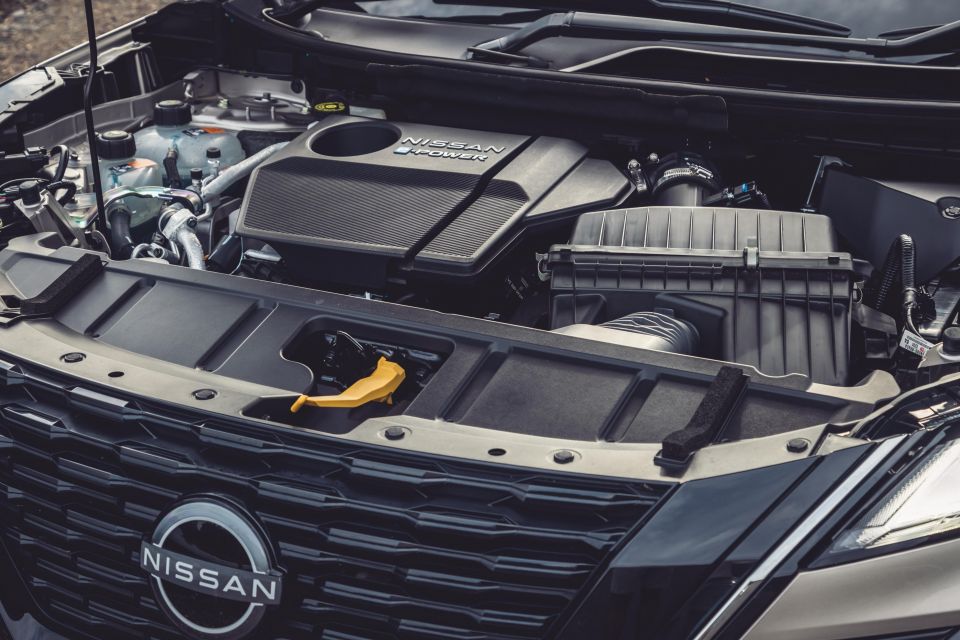
Under the bonnet is a 1.5-litre turbo petrol engine with variable compression technology – debuted by Infiniti a few years ago – which makes 105kW (4400rpm) and 250Nm (2400rpm). However, this motor doesn’t directly drive the wheels.
Instead, the petrol engine is hooked up to a motor-generator and an inverter, connected to a 2.1kWh lithium battery (1.8kWh usable). An electric motors on each axle drives the wheels in the e-4orce (single-motor 2WD is offered overseas).
The front motor develops 150kW/330Nm and the rear makes 100kW/195Nm. As these e-motors hit their peaks at different times, Nissan quotes a system power output of 157kW, but no combined torque figure.
Nissan says the X-Trail e-Power with e-4orce can accelerate from 0-100km/h in 7.0 seconds.
On the topic of efficiency – a key talking point given the ‘hybrid’ tag – Nissan quotes a combined fuel consumption figure of 6.1 litres per 100km, with emissions rated at 139g/km.
In isolation, not bad for a big-ish family SUV weighing in at up to 1911kg, but not great when you consider a RAV4 AWD Hybrid claims 4.8L/100km. The e-Power with e-4orce drivetrain adds about 250kg over the petrol 2.5 4WD X-Trail.
Like the rest of the X-Trail line-up, the e-Power with e-4orce has a 55-litre fuel tank. Nissan says the X-Trail e-Power can run on 91 RON regular unleaded, although 95 RON is recommended.
Maximum braked towing capacity for e-Power models is rated at 1650kg, compared to 2000kg for petrol versions.
We got about four hours of driving time between Sunshine Coast Airport (Maroochydore) and Brisbane via the hinterlands.
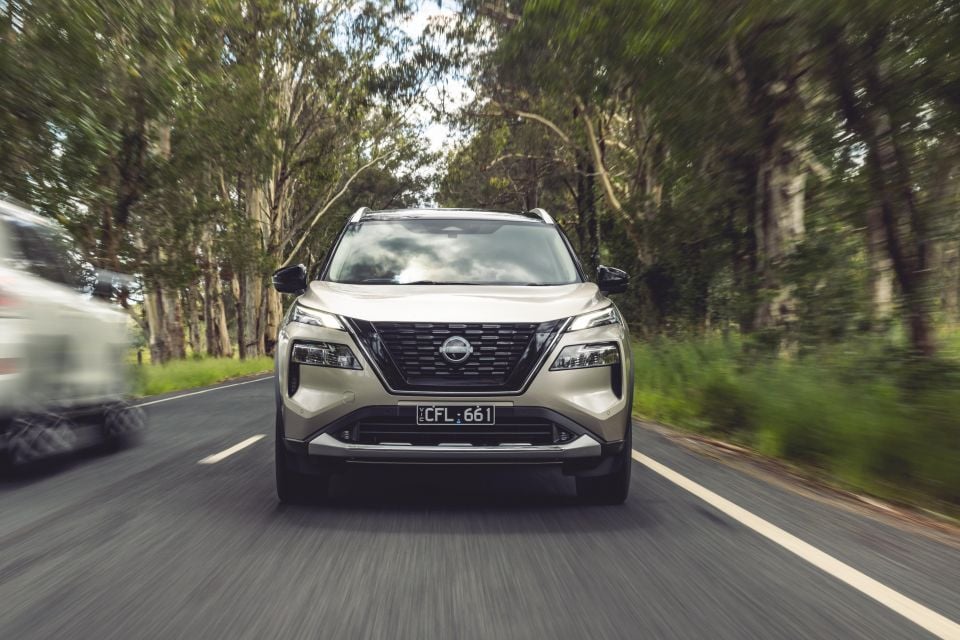
The bulk of the launch was high-speed B-roads through rolling hills, not necessarily where a hybrid family SUV should feel most comfortable, but Nissan says the roads were designed to demonstrate the e-4orce electrified AWD system.
We traversed country highways, broken back roads and even some sections of dirt trails – one of these was even signed ‘Goat Track’. Impressively, the e-Power in both trim levels ate it all up without much of a sweat.
While the power output of 157kW is a little down on the RAV4 Hybrid’s 163kW on paper, the immediacy of response from the electric motors pays dividends in the performance and refinement stakes.
There’s an EV-like linearity and smoothness to how the X-Trail Hybrid puts down its power, and the 1.5-litre engine is nicely muted and hums away in the background even at higher revs – something that can’t be said for some petrol-electric rivals.
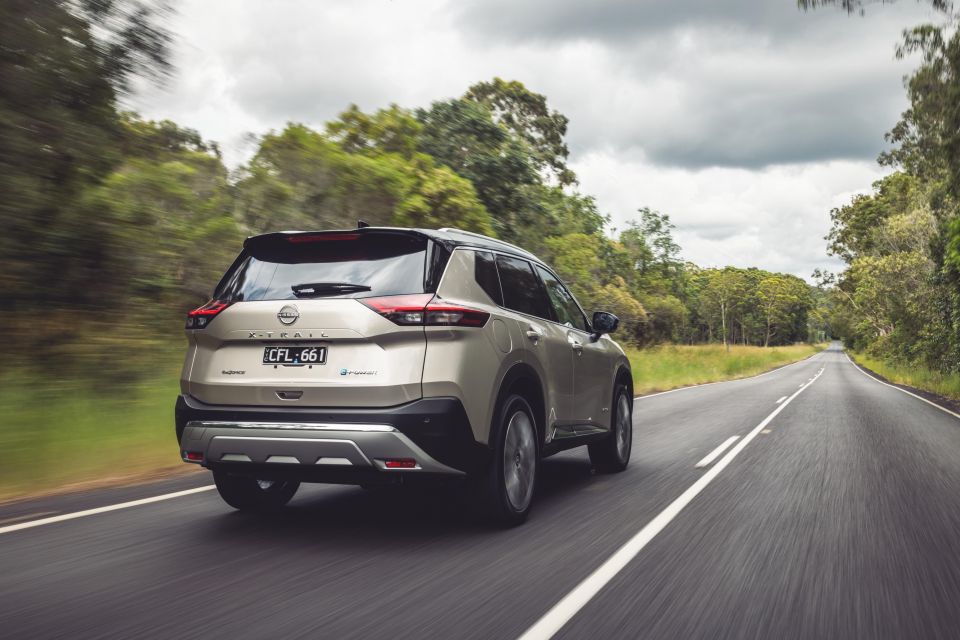
Nissan’s 0-100 claim of 7.0 seconds seems accurate by the seat of the pants, not that you’re going to be engaging in traffic light drag races with this thing. There’s also no shift in power delivery as speeds rise as there’s no change in power source – you don’t feel any loss in torque like you do when rival hybrids shift from electric to petrol power.
Insulation from wind and road noise is likewise refined for the segment, in particular the Ti with its smaller 19-inch wheels and chubbier 235/55 tyres (versus 255/45 R20 for the Ti-L).
Those differences in wheel and tyre package make the Ti the pick for ride comfort as well, although both variants are surprisingly well sorted on pockmarked backroads and pimpled inner-city streets.
There’s an added layer of compliance in the Ti, which is that touch softer and more settled over sharper hits, though the Ti-L was impressively well sorted and grippy. Through the twistier bits the Ti felt more natural given the softer overall tuning of the driver controls, but the Ti-L had a keener, more planted feel thanks to its greater footprint.
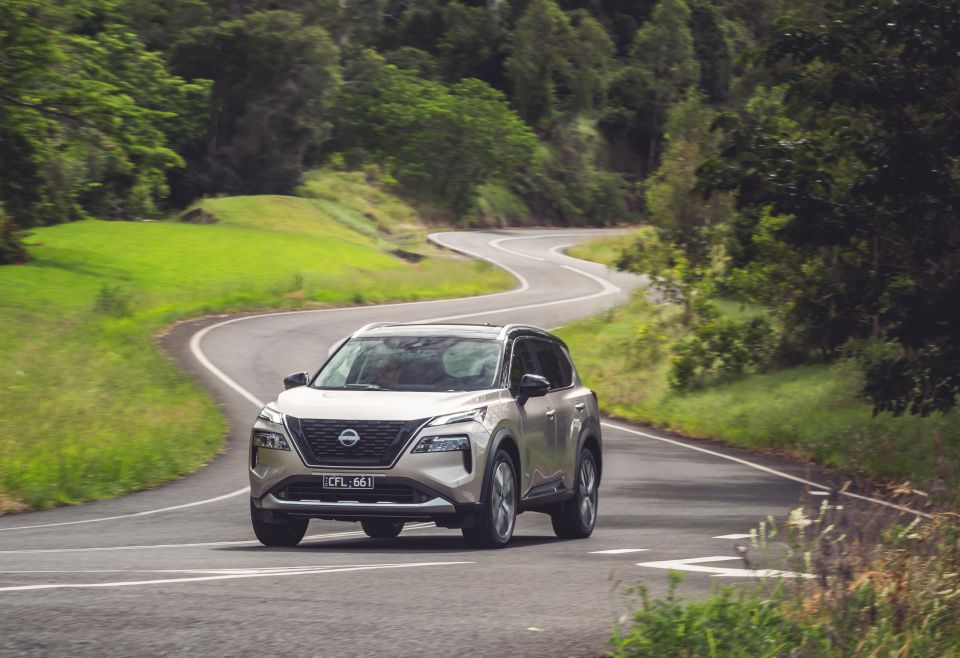
While the Ti-L’s grippy wheel and tyre package and torque-vectoring electric AWD might suggest a more dynamic focus, the light steering – while accurate – doesn’t inspire more spirited driving.
That said, the X-Trail e-Power with e-4orce is more than capable of stringing a few bends together without feeling out of place. Where it does its best work, however, is in town and on the open road.
At a cruise the X-Trail lopes along like its petrol counterpart, even more silently thanks to its electrified drivetrain. Even at highway speeds you’ll see it occasionally dip into EV mode when there’s enough charge in the battery, though under harder acceleration (up hills, for example) the engine needs to work a bit harder to feed the battery.
On the freeway you can just set the ProPILOT semi-autonomous assist and let the car do the bulk of the work. As we’ve previously said, Nissan’s highway driving suite is one of the more refined systems out there.

Where expert car reviews meet expert car buying – CarExpert gives you trusted advice, personalised service and real savings on your next new car.
We tackled some gravel roads as well during our test route, and just like the sealed sections the X-Trail seemed pretty comfortable. There was plenty of grip and the all-wheel drive system did a great job at making sure it sent torque to the wheel(s) with most traction.
Insulation from the rougher stuff was good too. Sometimes in these road-focused SUVs you get a lot of chassis vibrations and you can hear every stone hit the underbody – the X-Trail’s cabin was pretty well insulated from it all.
If you ever need to drive over some even rougher stuff – we doubt most customers will – there’s a dedicated off-road mode, as well as hill descent control. Paul tackled a mild off-road course in the X-Trail e-Power on the international launch drive, which you can watch in the video embedded up top.
Like I noted earlier, the X-Trail Ti e-Power’s chubbier tyres and smaller wheels seem better suited to most conditions in terms of comfort and refinement, and it was a similar story on unsealed roads. The ride was more settled, and it seemed more confident.
It’s also worth noting the X-Trail e-Power is about 15mm lower than petrol variants in terms of ground clearance, though that didn’t really come into play on our test route.
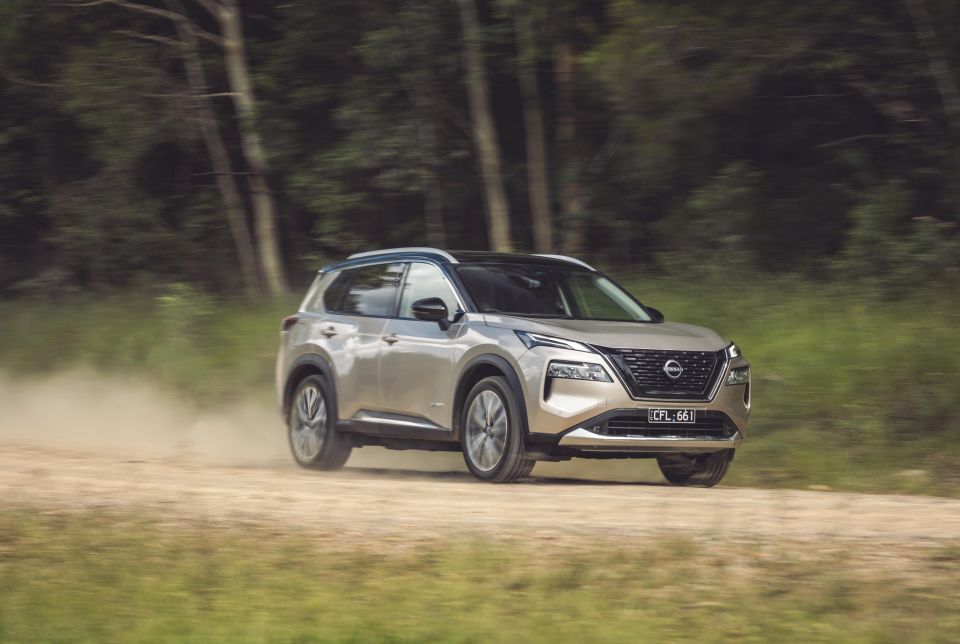
Following the launch I took an X-Trail Ti e-Power for a couple days while working out of the CarExpert Brisbane office, and spent a little more time behind the wheel in inner city and urban areas.
It really demonstrated its strengths here, with smooth and effortless performance in city traffic, a cushy ride over the lumps and bumps of Brisbane’s busy streets, and a quiet, well-insulated cabin.
Given my commutes were quite short (I was staying about 2.0km from the office), there wasn’t a massive drop in the average fuel economy – though some of my trips would see averages of 4-5L per 100km.
On a couple of occasions I did try the e-Power’s EV Mode button, which is much more useful than Toyota’s. Without trying I could manage 2-3 kilometres without the petrol engine needing to fire, and I could use the throttle as normal as opposed to keeping it under 20 per cent like its top-selling rival.
I look forward to getting one in Melbourne and using it for my usual commuting, to get a better gauge of the X-Trail’s driving characteristics and fuel consumption in my day-to-day stuff.
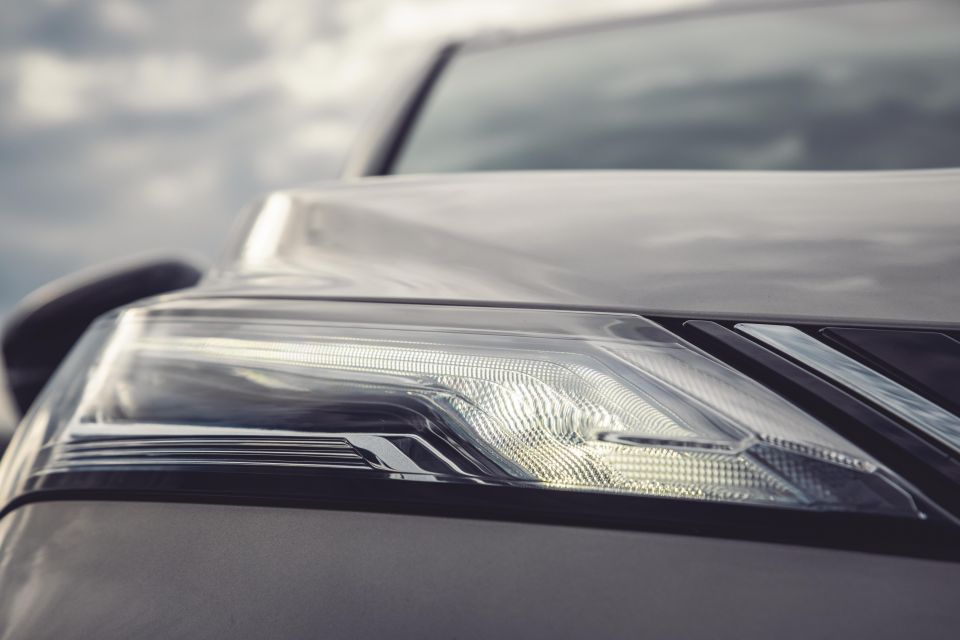
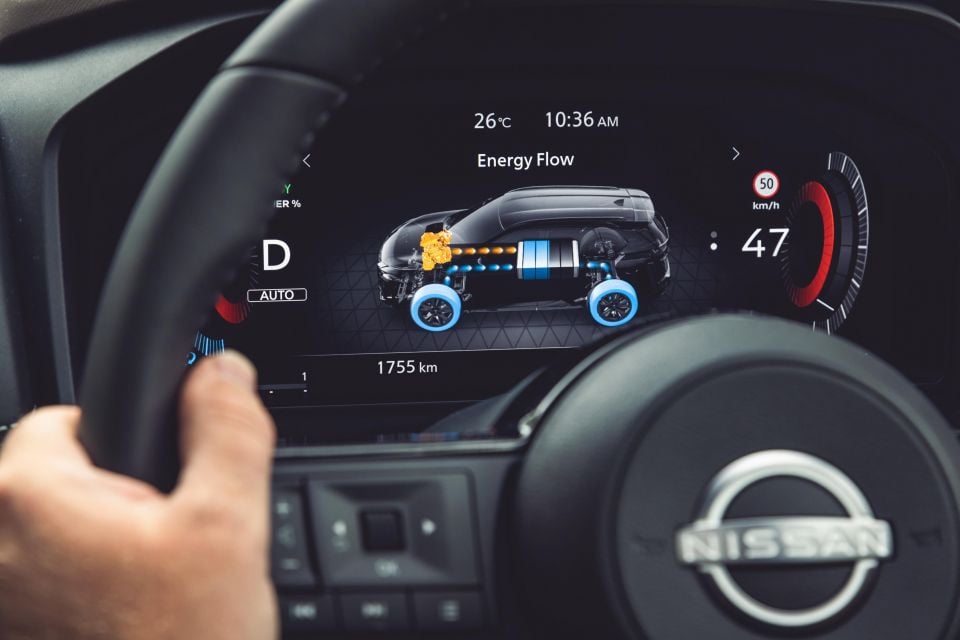

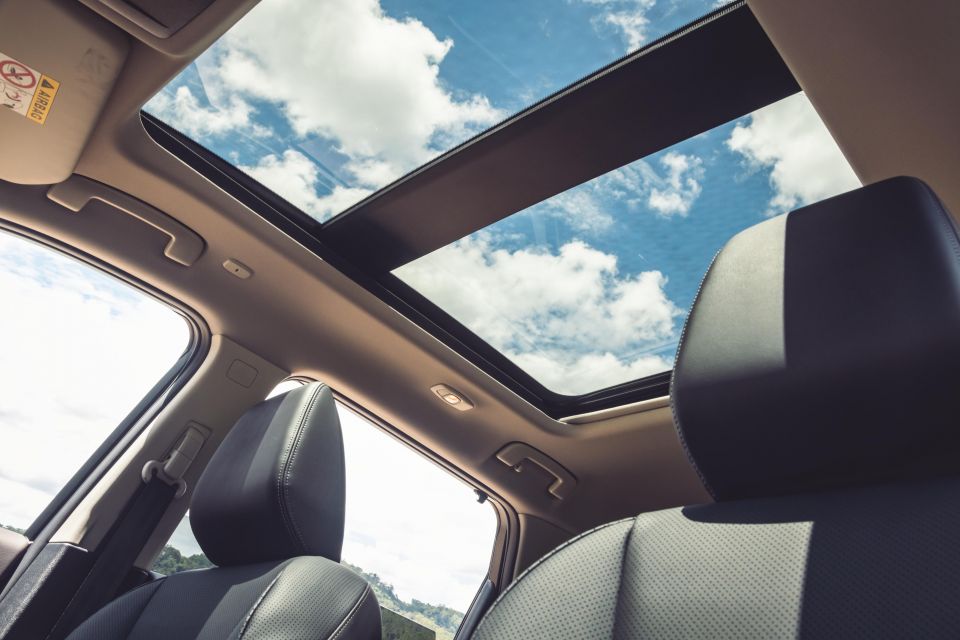
X-Trail Ti e-Power with e-4orce highlights:
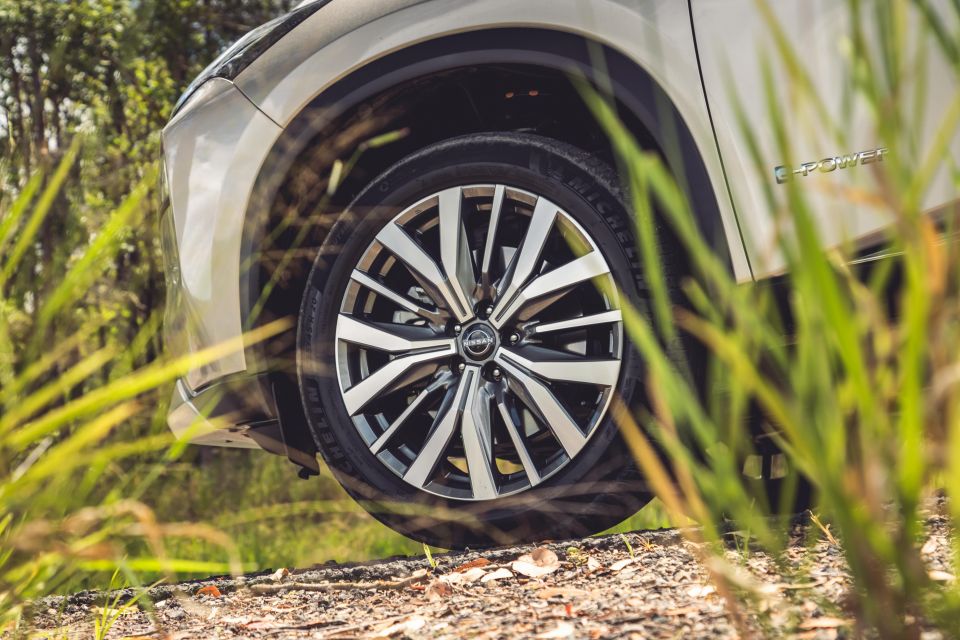

X-Trail Ti-L e-Power with e-4orce adds:
MORE: 2023 Nissan X-Trail price and specs
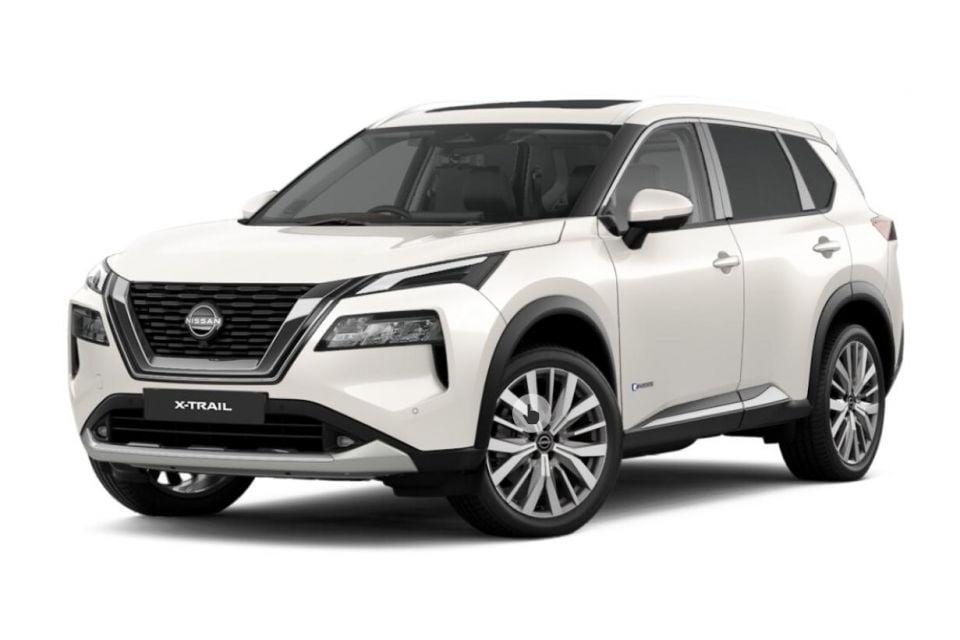
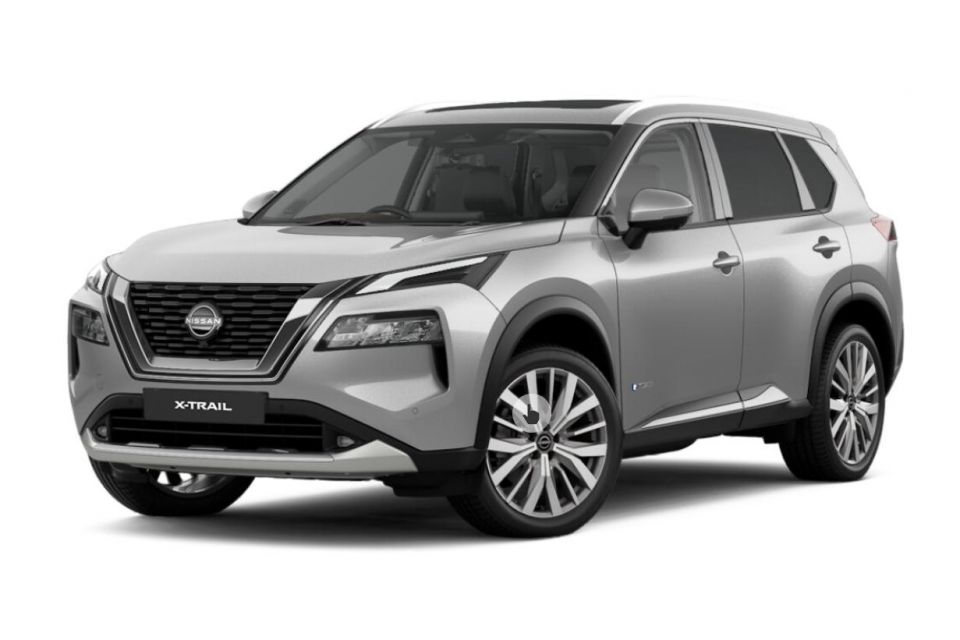
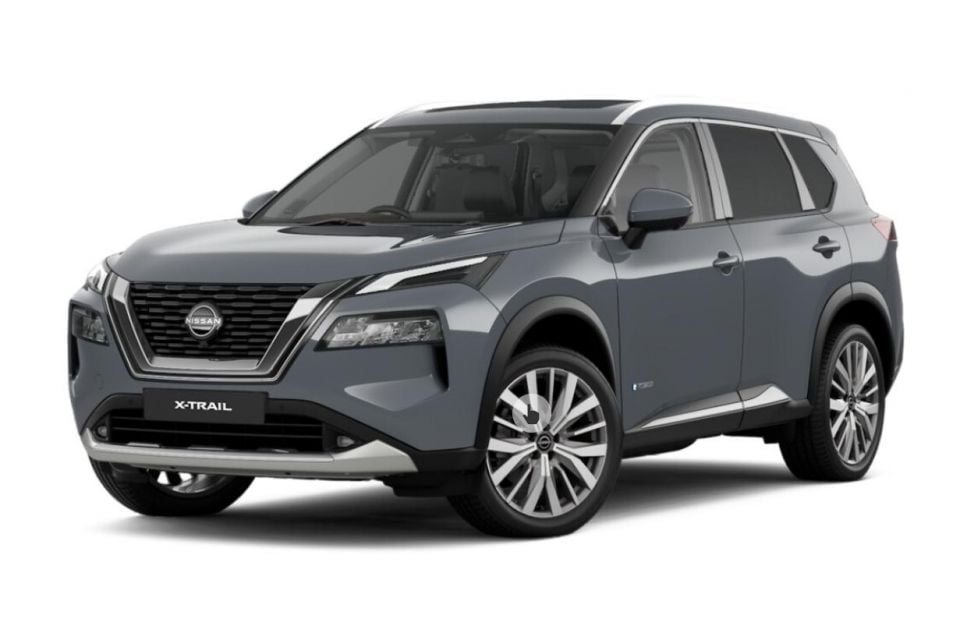
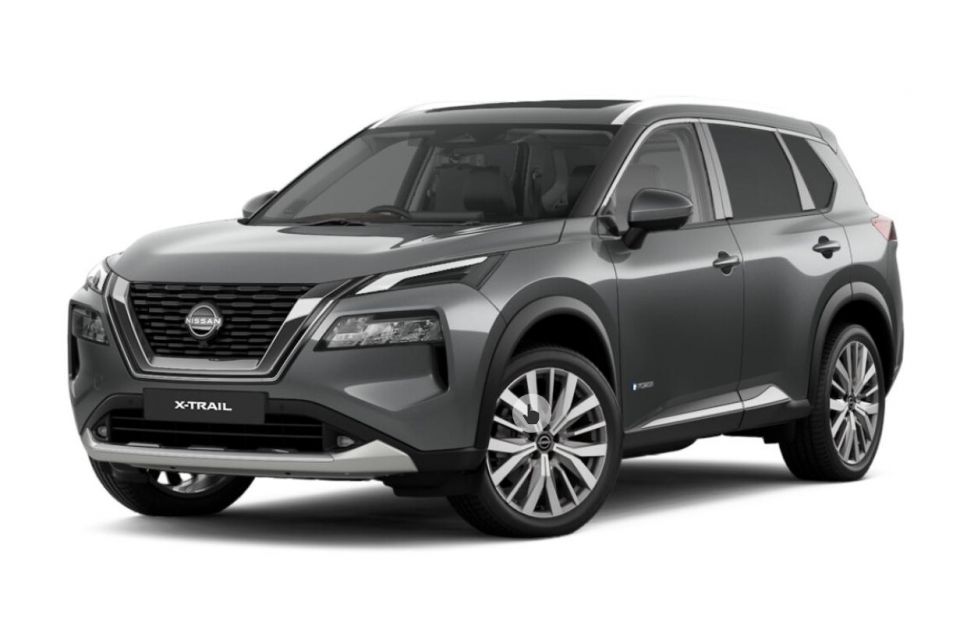
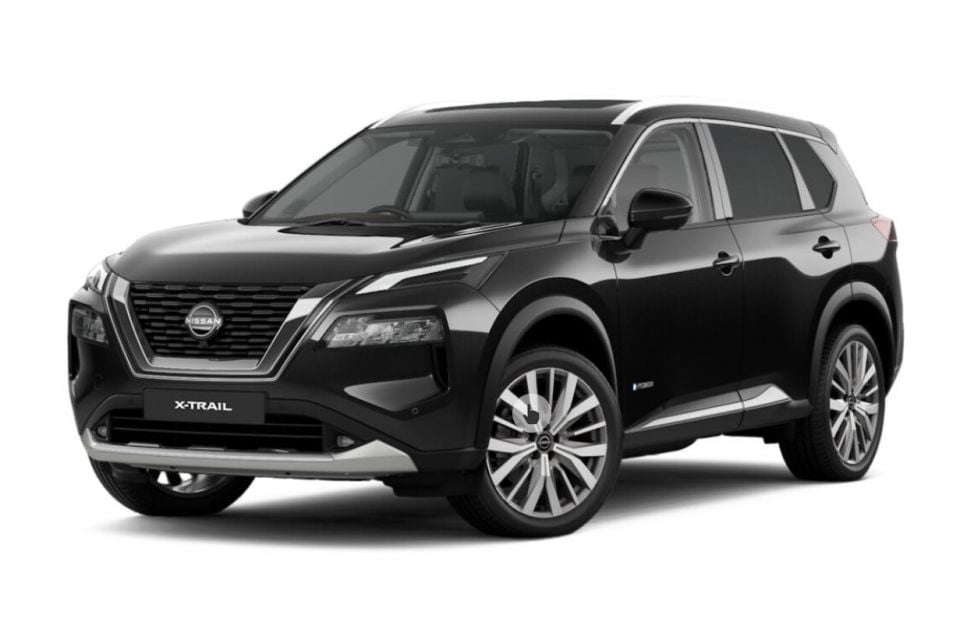
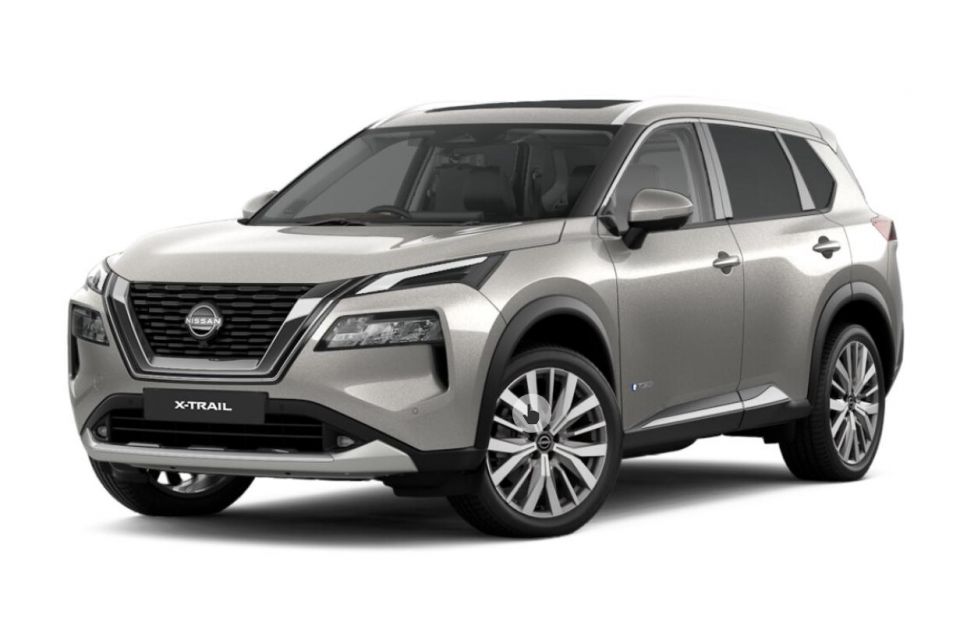
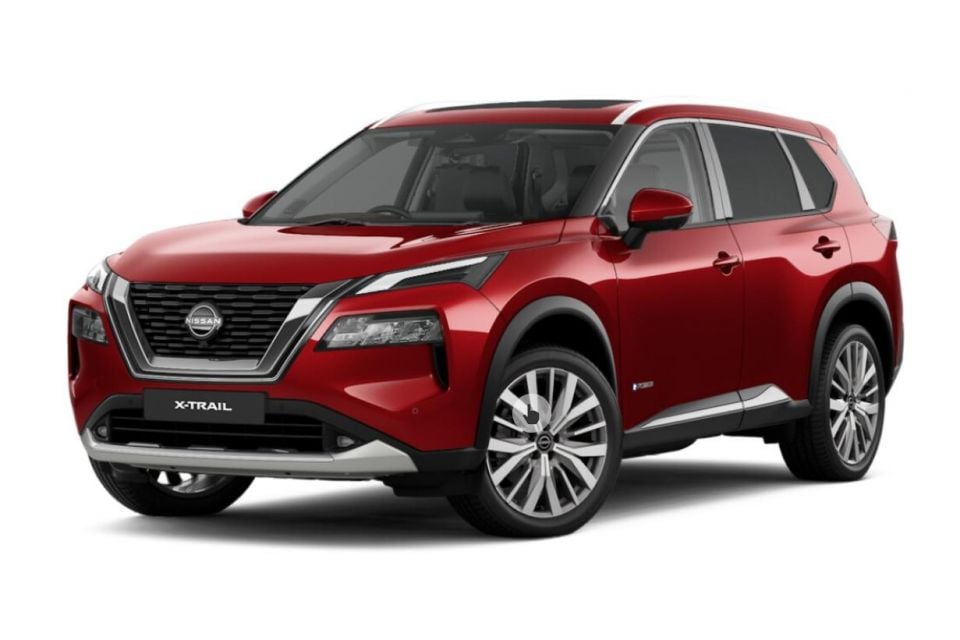
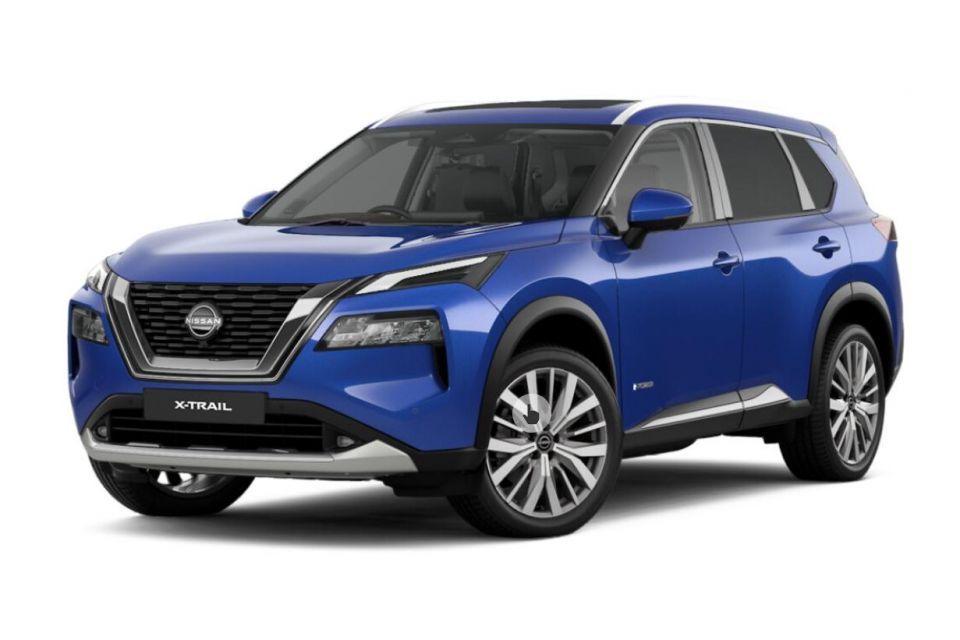
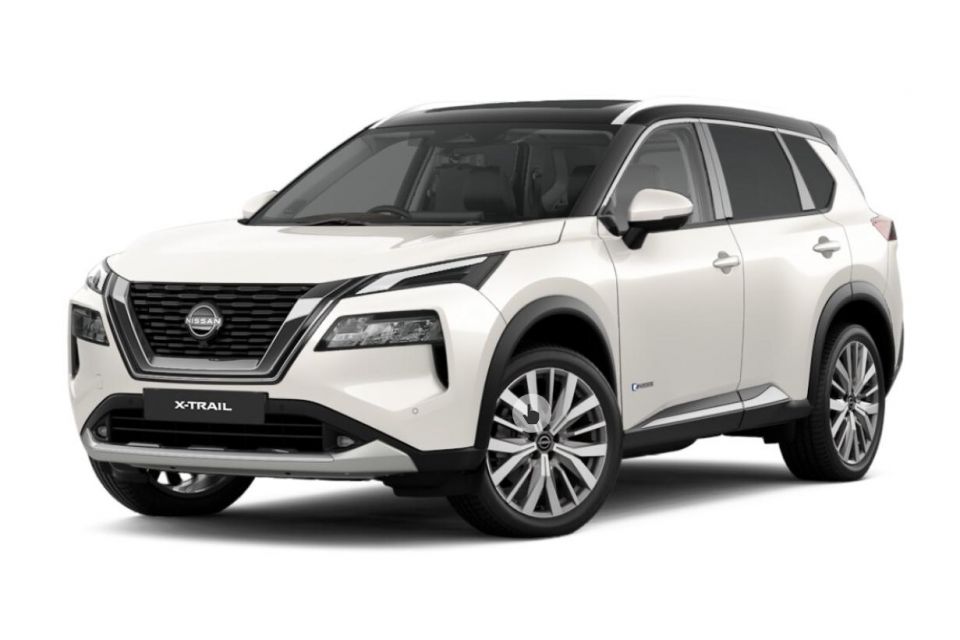
*Premium paint costs $700 extra **Two-tone finishes cost $1200 extra
The new X-Trail scores a five-star ANCAP safety rating – based on crash testing of the related Nissan Qashqai in 2021 – this now includes e-Power versions as well.
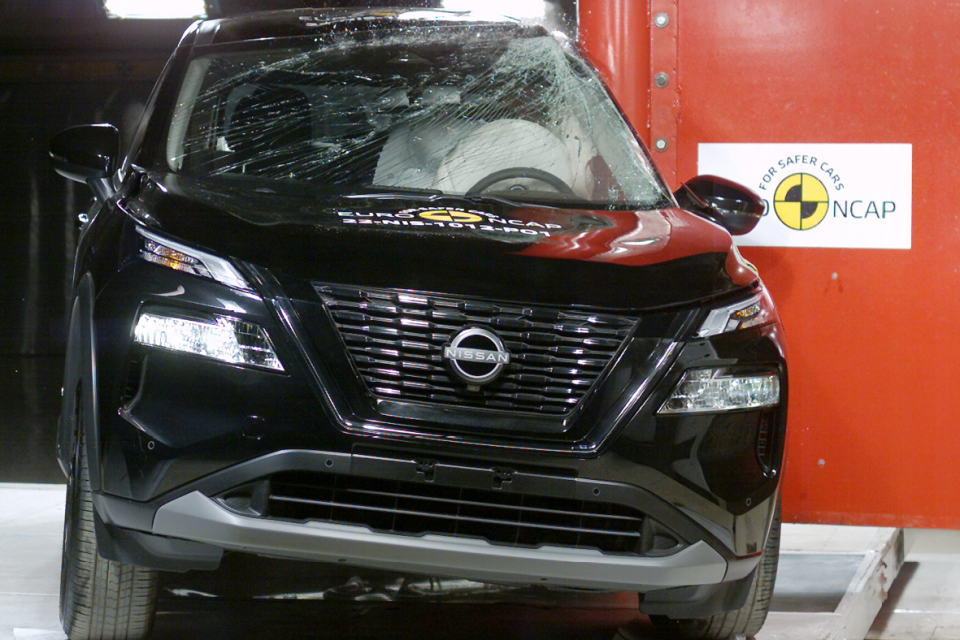
The X-Trail scored 91 per cent for adult occupant protection, 90 per cent for child occupant protection, 74 per cent for vulnerable road user, and an excellent 97 per cent for safety assist.
Standard features on all grades:
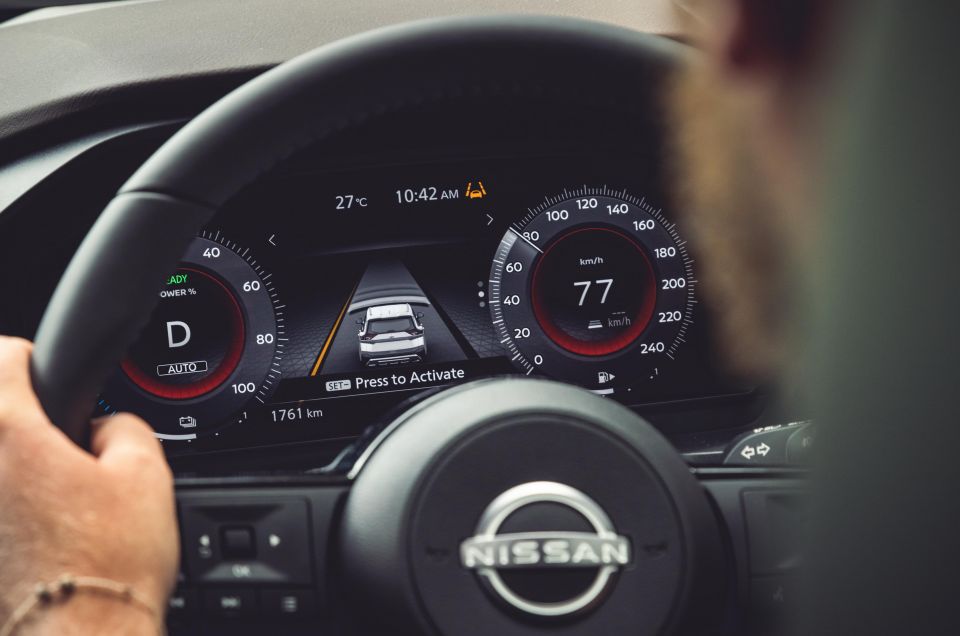
ST-L and above add:
Ti and above add:
As with the wider Nissan range, the X-Trail e-Power is covered by a five-year, unlimited-kilometre warranty.
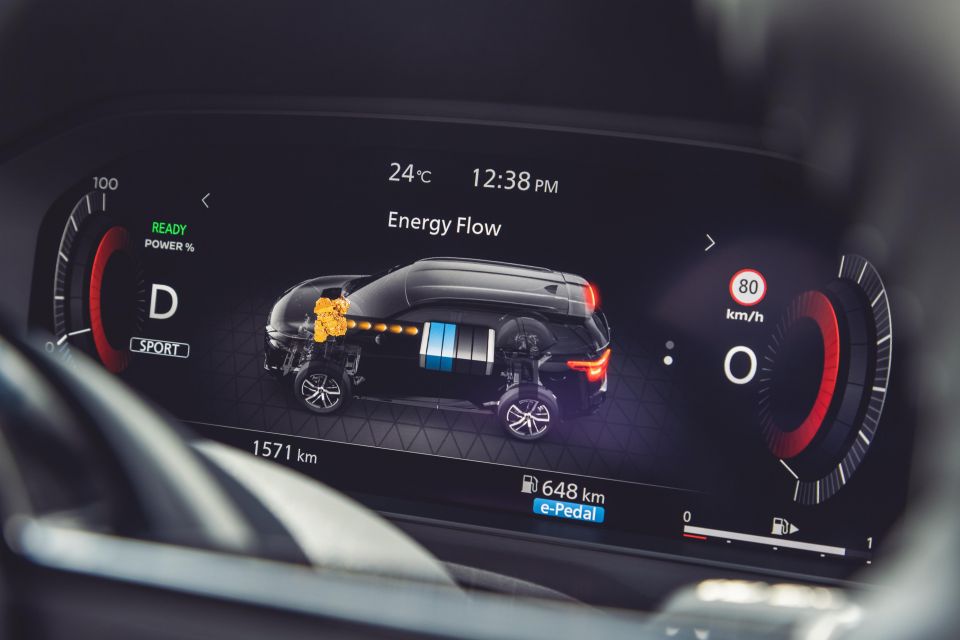
Nissan also throws in five years of roadside assistance with purchase. Scheduled maintenance for all X-Trail models, meanwhile, is a disappointingly short 12 months or 10,000 kilometres – whichever comes first.
The brand offers six capped-price services, which in the e-Power cost $365, $472, $534, $571, $411 and $698. That amounts to $3051 over six years or 60,000 kilometres, which is $5 cheaper than the 2.5 4WD X-Trail over the same period.
It’s a shame Nissan doesn’t extend the servicing intervals to 15,000km to match the bulk of its rivals, including the related Nissan Qashqai as well as the X-Trail’s other platform mate – the Mitsubishi Outlander.
Our test route wasn’t representative of the kind of daily commuting an owner is likely to undertake, but even at high speed the X-Trail Ti-L e-Power was returning an indicated 7.1L per 100km and the smaller-wheeled Ti showed 6.9L per 100km – the latter variant got some urban time as well.
The manufacturer claim is 6.1L/100km – so not far off, but not stellar either.
The e-Power is the best X-Trail currently on sale.
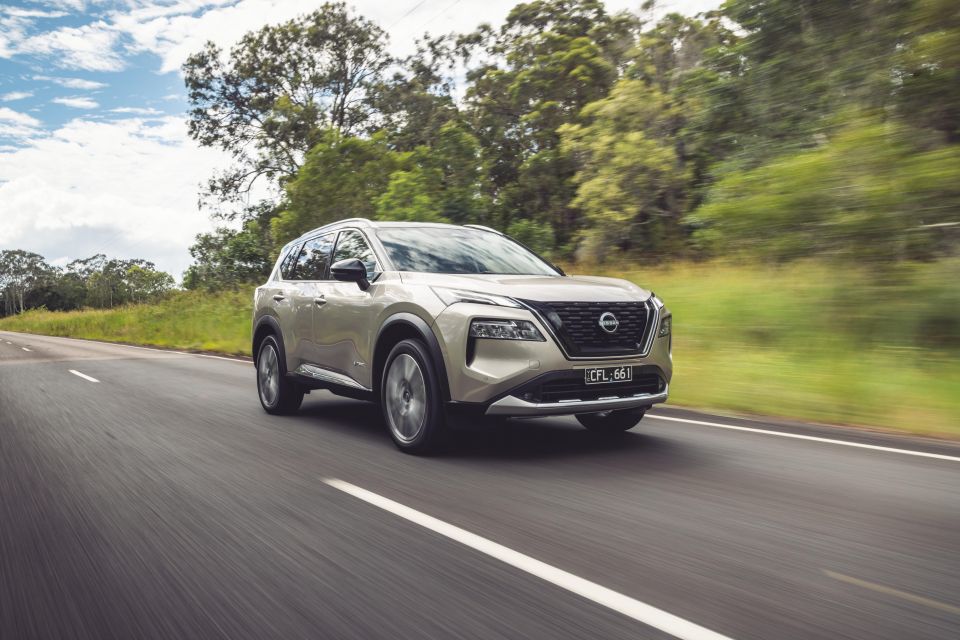
Compared to the ageing 2.5-litre petrol that powers the core range, Nissan’s series hybrid system gives the mid-size SUV a shot in the arm on the road, bringing an effortless, smooth and linear drive that’s also luxuriously refined.
Sure, it’s not quite at Toyota levels of hybrid efficiency, but there’s a fuel saving over the regular petrol variants that will add up in the long run, and it even ends up being cheaper to service – though it’s still a little behind the pack in terms of maintenance schedule and overall running costs.
The high-spec Ti and Ti-L launch grades carry over their plush and practical cabins, but the lack of a third row (despite being available overseas) and $4200 premium over the 2.5 4WD version could be barriers for the more budget conscious.
Offering the option of the single-motor e-Power model, which is also even more efficient according to global specs, would also be a wise move in the future to better compete with key petrol-electric rivals. Hopefully we see some more affordable e-Power options lob Down Under in the near future.

Click the images for the full gallery
Where expert car reviews meet expert car buying – CarExpert gives you trusted advice, personalised service and real savings on your next new car.
James Wong is an automotive journalist and former PR consultant, recognised among Australia’s most prolific motoring writers.


William Stopford
14 Hours Ago


Matt Campbell
22 Hours Ago


William Stopford
2 Days Ago


Josh Nevett
4 Days Ago


CarExpert.com.au
5 Days Ago


Josh Nevett
6 Days Ago